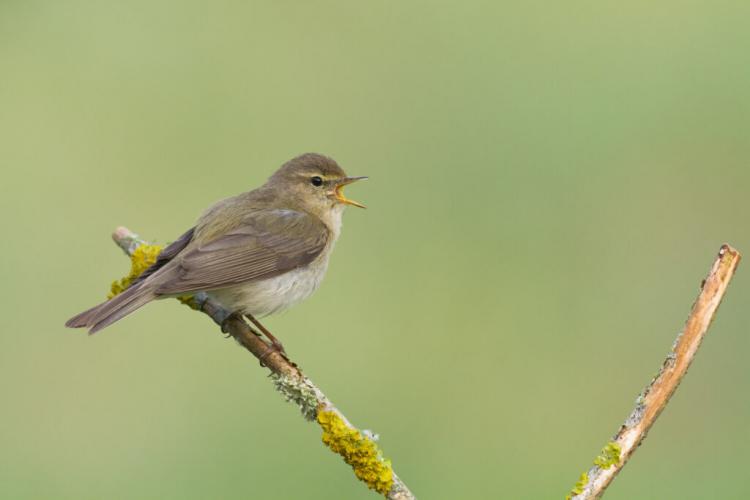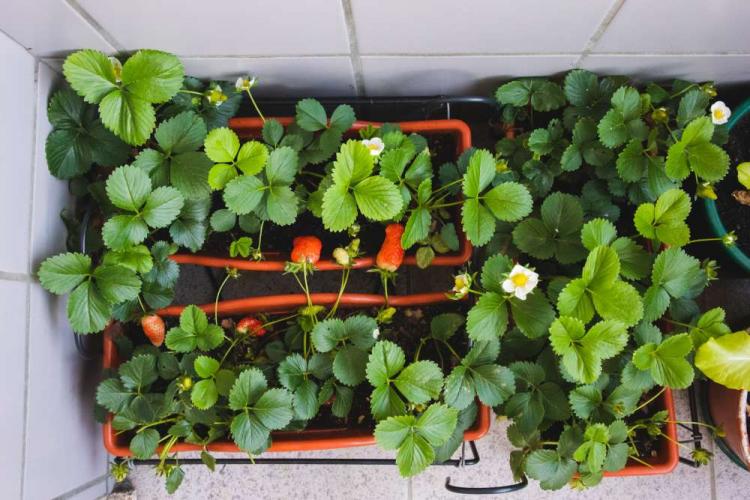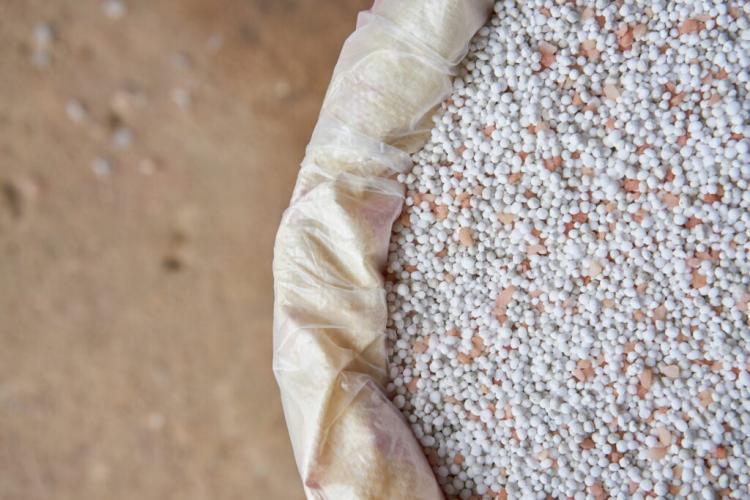Fertilizing indoor plants: when, how often & what is the best fertilizer?
Not only the plants outside, our indoor plants also need extra nutrients. We show how and with what best to fertilize indoor plants.
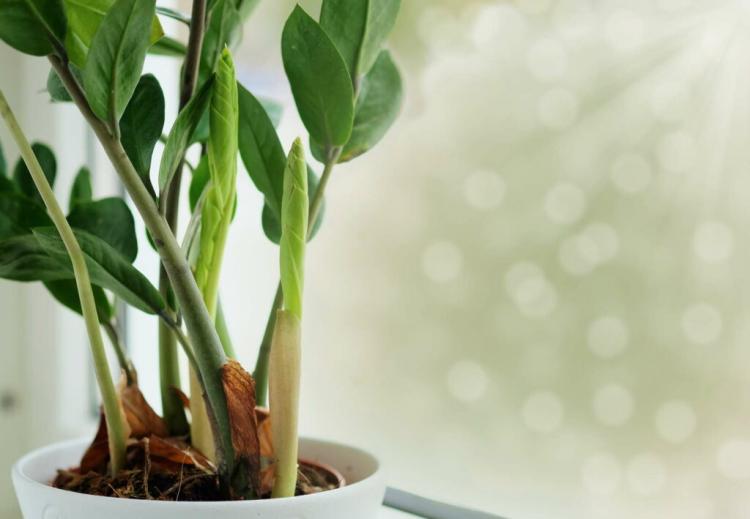
So that indoor plants can thrive vigorously, they should be fertilized regularly [Photo: KhunYing / Shutterstock.com]
Every plant, whether garden or houseplant, needs nutrients to survive. An insufficient supply of nutrients can lead to deficiency symptoms and the susceptibility to diseases increases significantly. So that your indoor plants thrive and grow splendidly, you should support them with regular fertilizers. Nitrogen, potassium and phosphorus are the nutrients that the plant needs to the greatest extent. Of course, we cannot provide you with general instructions for all plants, but we will show you what you should generally pay attention to when fertilizing indoor plants. In the following we explain in more detail when and how often you should fertilize your indoor plants. We also give you tips on what to look out for when choosing a fertilizer and how you can best go about fertilizing indoor plants.
When and how often should you fertilize indoor plants?
Table of Contents
There is no general answer to when and how often house plants are fertilized. Basically, one would have to differentiate more strongly here, since the group of indoor plants is very diverse. In principle, however, the following applies: Since the nutrients in the substrate are used up at some point, they have to be replaced from time to time in pot cultivation. Sensitive and slow-growing specimens, such as certain cacti ( Cactacea ), only need infrequent fertilizers. Most other indoor plants, on the other hand, should be fertilized regularly during the growing season.
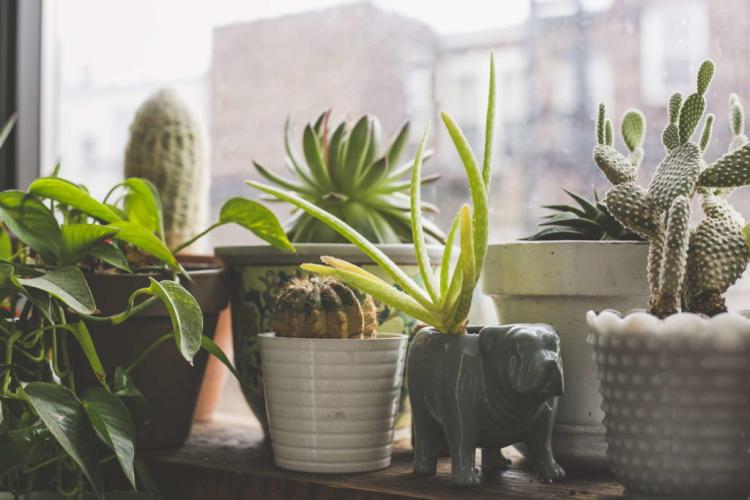
Cacti are actually robust – but they should also be fertilized from time to time [Photo: Shannon West / Shutterstock.com]
Should you fertilize indoor plants in winter? However, indoor plants should only be fertilized during the growing season, because the plants need a break in the cold season. Only specimens that bloom in winter, such as the poinsettia ( Euphorbia pulcherrima ), should be fertilized during this time.
Indoor plant fertilizer: what is the best fertilizer?
Of course you shouldn't overdo it with fertilization, otherwise the plant can even perish in the worst case. Therefore, less is often more. It is better to provide your indoor plants with fertilizer more often, but in smaller doses. There are very different forms of fertilizer available for supplying your darlings. Various liquid fertilizers, powders, granulates or so-called fertilizer sticks are offered in specialist shops. Most often, the composition of the fertilizers is suitable not only for one plant, but for different ones. When using such preparations, it is best to follow the application recommendations and instructions on the packaging.

As different as the plants themselves are, so are their fertilization requirements [Photo: Nukul Chanada / Shutterstock.com]
Depending on the type of plant, the fertilizer requirement is very different. Therefore, find out as much as possible in advance about the requirements of the individual plants. In general, the following rule applies:
Indoor plants, which mainly adorn themselves with many large leaves and grow strongly, need more nitrogen than plants that produce many flowers and fruits and therefore need more phosphorus. Sufficient potassium is especially important for the formation of roots and the resilience of indoor plants.
But not all fertilizers are created equal. We explain below what is important when choosing the right fertilizer.
Provide indoor plants organically with organic fertilizers
Organic fertilizers are preferable to mineral alternatives because of their sustainability, but also because of their proven positive influence on plant growth and their safe use. These include, for example, natural fertilizers such as compost or stable manure, which are often used in the garden. In the house or in the apartment, however, products from specialist retailers are more likely to be used.
Organic liquid fertilizer for house plants
Liquid fertilizers have the advantage that they can easily be added directly to the substrate with the irrigation water. In mineral liquid fertilizers, the nutrients are in the form of soluble salts that are directly available to plants. However, this harbors the risk of over-fertilization if the correct dosage is not chosen.
Due to the high organic content in our biological liquid fertilizers, however, not all nutrients are released in one fell swoop and the plant is supplied over a longer period of time. A good choice for indoor plants is, for example, our Plantura organic indoor & green plant fertilizer, which is suitable for many plants in the apartment. The essential nutrients nitrogen and potassium ensure green leaves and strong roots. The basis of our biological liquid fertilizer is, among other things, residues from the food industry, which makes it a particularly sustainable and environmentally friendly fertilizer. It also contains microorganisms that support the growth of the roots.

Liquid fertilizer can easily be administered via the irrigation water [Photo: fizkes / Shutterstock.com]
If indoor plants not only impress with their leaf decoration, but also form numerous or large flowers, you should use a special flowering plant fertilizer. Flowering plant fertilizers have a different nutrient composition than green plant fertilizers and in this way support the flowering of your plants. Our 100% organic Plantura organic flower & balcony fertilizer, for example, is suitable for flowering indoor plants, as it optimally supplies the plant with nutrients. Since it consists of purely natural ingredients, it is particularly gentle on the environment and also harmless to pets.
Important: The amount of liquid fertilizer required depends on the plant. Some species need new nutrients more often than others and accordingly need more fertilization. The speed of growth also provides information about the nutrient requirement. Fast growing plants need more fertilizer than slow growing ones. Basically, you should rather fertilize regularly and in a lower concentration than rarely in large quantities, because too much nutrients can damage the plant. It is therefore imperative that you find out about the nutritional requirements of your plant before fertilizing and that the dosage is based on the instructions given on the liquid fertilizer.
Long-term organic fertilizer for house plants
In addition to liquid fertilizers, there are also organic fertilizers in solid form. Such organic long-term fertilizers provide your plant with nutrients over a much longer period of time than many conventional mineral fertilizers. The nutrients are released through the decomposition via microorganisms and are therefore available to the plant for a long time. Our Plantura organic universal fertilizer, for example, is a sustainable long-term fertilizer. It consists predominantly of purely plant-based, organic ingredients and, due to its composition, is ideal for those indoor plants that prefer nitrogen-based fertilization. Our Plantura organic universal fertilizer in granulate form is also easy to dose and easy to use. Biological fertilizers also support the build-up of humus in the soil, which has a positive effect on the water balance. Here we have summarized the most important advantages of solid biological fertilization for you:
- Particularly gentle on plants, animals and people, as no chemicals are used
- Good for soil life and soil structure
- Supports the build-up of humus and thus improves the quality of the soil in the long term
- Natural long-term effect
- No risk of over-fertilization

The right amount of fertilizer is crucial for the nutrient supply [Photo: CLICKMANIS / Shutterstock.com]
To ensure that you provide your indoor plants with the right amount of nutrients, we have prepared precise fertilization instructions for you. Depending on the type of houseplant, it may of course be necessary to adjust the amount of fertilizer to the requirements of the plant. It is best to feel your way carefully and gradually increase the amount of fertilizer and the number of fertilizer applications.
Long-term organic fertilization: Instructions & dosage quantities for house plants
- When planting: Work about 3 – 5 g / l pot volume (about 1 teaspoon) of our Plantura organic universal fertilizer into the substrate.
- Then water the substrate.
- About every three months you can work a further 2 – 5 g / l pot volume (about 1 teaspoon) of the fertilizer into the upper substrate layers.
Tip: Our fertilizer granules can also be soaked in water for a few hours and then applied with a watering can – this makes the nutrients more accessible to microorganisms and the effect starts earlier.

The fertilizer granules are incorporated into the substrate during planting [Photo: santypan / Shutterstock.com]
Fertilize indoor plants with home remedies
If you don't want to use commercial fertilizers, you might even find it in your own household. Fertilizing with coffee grounds, eggshells and wood ash is also suitable for some indoor plants.
Dried coffee grounds can easily be worked into the top layers of the soil. It contains nitrogen, phosphorus and potassium and is slightly acidic. You can do the opposite with crushed eggshells. These are rich in lime and other minerals. They are therefore particularly suitable for fertilizing plants that prefer a soil with a higher pH value. If you own a stove you can also use wood ash as fertilizer. However, this is strongly alkaline and is therefore not suitable for all indoor plants. It is very rich in potassium, but also contains lime and trace elements. Ash also helps counteract fungal diseases and rot.
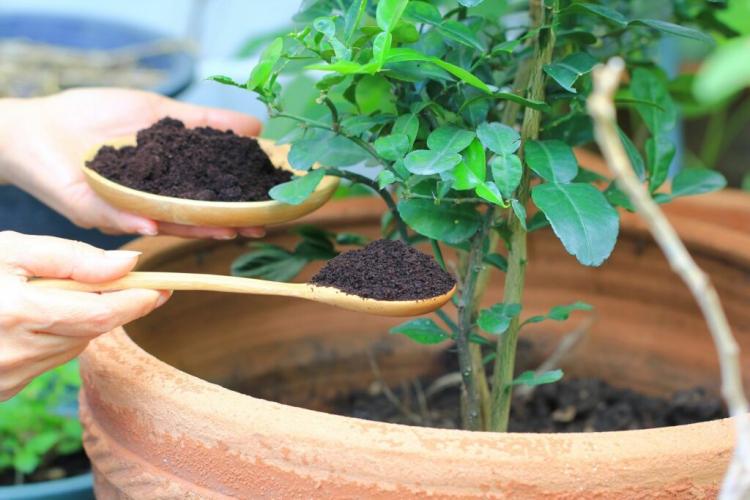
Coffee grounds can also be used as fertilizer [Photo: Monthira / Shutterstock.com]
Fertilize indoor plants with mineral fertilizers: blue corn and Co.
Mineral fertilizers are popular because they usually contain nutrients in high concentrations. However, some plants – such as orchids ( Orchidaceae ) or succulents – can quickly be overfertilized because they only have a low nutritional requirement. In addition, mineral fertilizers are anything but environmentally friendly to produce. When using organic fertilizers, on the other hand, the risk of over-fertilization is much lower, as these decompose slowly and the nutrients of the plant are only made available gradually.
In most cases, the maintenance of indoor plants also includes regular repotting. We have put together everything you need to know about repotting indoor plants for you.

